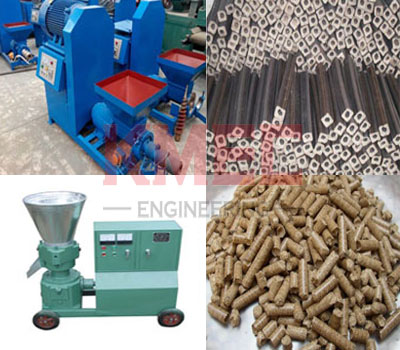Difference between biomass pellet fuel and briquette fuel
With the rapid development of renewable energy, biomass fuel has gradually become an environmentally friendly and efficient energy choice. Among many forms of biomass fuel, granular fuel and briquette fuel are the two most common types. Although they all use biomass as raw materials, there are significant differences in shape, density and combustion time.

First of all, there are obvious differences between bio-particle fuel and briquette fuel in appearance and size. Granular fuel is usually cylindrical, with a diameter of 6-10 mm and a small and regular appearance. However, briquette fuel is in the form of block or brick, with large volume and diversified shapes. This difference in shape makes granular fuel more suitable for automation equipment, while briquette fuel is mostly used in large boilers or industrial applications.
Secondly, the density of the two is also different. Biomass pellet fuel is formed by high-pressure extrusion, and its density is usually high, generally between 1.1 and 1.3 tons/m3. However, briquette fuel has a relatively low degree of compression due to its large volume, and its density is usually between 0.8 and 1.0 tons/cubic meter. High-density granular fuel is not only convenient for transportation and storage, but also can provide higher calorific value during combustion.
Finally, combustion time is also one of the important differences between the two. Because of its small volume and high density, granular fuel burns relatively fast, which is suitable for releasing a lot of heat energy in a short time. However, briquette fuel has a large volume and a long combustion time, which is more suitable for scenes that need continuous heating, such as large industrial boilers or heating systems.
In a word, biomass pellet fuel and briquette fuel have their own advantages and applicable scenarios. In the selection, we should comprehensively consider the specific needs, such as equipment type, heat demand and economy, so as to give full play to the characteristics of the two fuels and contribute to energy conservation, emission reduction and environmental protection.

